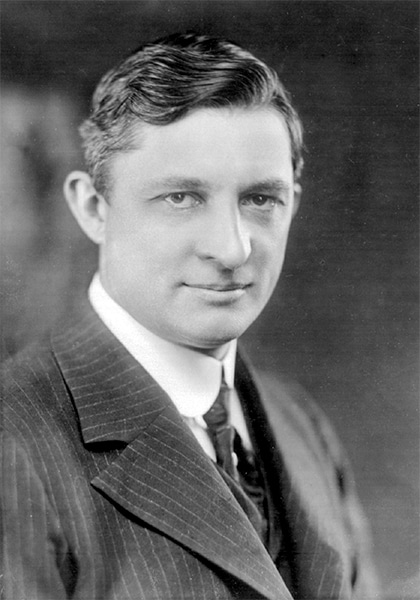
When temperatures rise outside, it’s hard to imagine what life would be like without air conditioning.
The ability to mechanically cool indoor spaces certainly makes our homes more comfortable in hot weather, but the invention of air conditioning in the early 20th century was a driving factor for modern commerce, medicine, technology, and other industries that are part of our daily lives. Once considered a luxury, air conditioning has become essential for our social and economic well-being.
Let’s dive into a brief history of modern air conditioning and how it changed our lives for the better.

For thousands of years, humans have found innovative ways to cool their homes in hot climates. Ancient Egyptians hung wet mats in their door frames to remove indoor heat through evaporation. The Greeks and Romans installed public baths and pumped cold water from underground aqueducts to pipes between their walls. In Persia (now known as Iran), architects integrated windcatchers into their designs to ventilate homes and other structures.
The journey toward modern home cooling systems started when scientists and inventors like Benjamin Franklin, John Hadley, and Michael Faraday experimented with refrigeration in the 18th and 19th centuries by evaporating alcohol, ammonia, and other chemicals.
One invention that stands out during this time was an open cooling system invented by Florida physician John Gorrie in 1851. Gorrie believed cooling was a solution to prevent the spread of diseases and improve comfort in hospitals. The large device used power from horses, water, sails, or steam to lower indoor temperatures by compressing air and water.
Although he never profited from this feat of engineering, Gorrie’s invention (along with Tesla’s discovery of electricity) paved the way for the air conditioning systems we use today.


At the turn of the 20th century, New York–based printing company Sackett & Wilhelms was desperate to find a solution to humidity problems that wreaked havoc on its printer ink, causing poor printing quality, scrap waste, and lost production time.
Then, along came 25-year-old engineer Willis Carrier, a recent graduate of Cornell University who worked for Buffalo Forge Company. Carrier presented a design he called an “Apparatus for Treating Air” to Sackett & Wilhelms in July 1902 that cooled, treated, and dehumidified the air. The large contraption was a welcome solution for the printing company, but it also was the birth of modern air conditioning.

In the following decades, Carrier established his own company, called Carrier Engineering Corporation, and became a global leader in air conditioning for businesses in all industries. However, these systems were too large and expensive for individual homes.
Carrier and other companies like Frigidaire, General Motors, and General Electric worked to advance residential air conditioning in the late 1920s. In 1929, Frigidaire introduced a mini-split system shaped like a radio cabinet that was small enough to fit into homes. In 1931, H.H. Schultz and J.Q. Sherman created the first window air conditioner used in apartments to this day. At the time, these units cost between $10,000 and $50,000 (equivalent to $120,000 and $600,000 today).
Over the years, industry leaders continued to find ways to make air conditioners more accessible to homeowners. By the 1960s, cooling equipment was much more affordable and installed in nearly every new home construction of the time, which fueled population growth throughout the United States – especially in the south.

After an energy crisis unfolded in the 1970s, Congress passed a series of laws to reduce energy consumption. The Department of Energy issued energy efficiency standards in 1992 for all air conditioner manufacturers that are still in place today.

Initially, the department estimated people would save $29 billion on their energy bills from 1993-2023. A reissued standard in 2006 estimates energy savings will be more than $70 billion through 2035 and will “avoid more than 369 million metric tons of carbon dioxide emissions, equivalent to the annual greenhouse emissions of about 72 million cars,” according to the Department of Energy’s website.
“The program has already driven huge efficiency improvements in new air conditioning technology that has helped consumers save energy and money,” the website states. “In fact, new air conditioners today use about 50 percent less energy than they did in 1990.”

Home cooling systems today have become even more efficient with the development of modern technology. Programmable thermostats, for example, adjust indoor temperatures automatically to save homeowners money on their utility bills. Cooling systems like the Daikin FIT use inverter technology to keep home temperatures consistent, comfortable, and efficient. The mini-split system is another modern development that gives homeowners the ability to cool specific areas in their houses without installing ductwork.

Overall, people have more options than ever when exploring cooling systems for their homes. Air conditioners will continue to evolve with the times, and as they do, Bears Home Solutions will be there every step of the way. To learn about our air conditioning installation and maintenance services, please visit our Cooling page or contact us today.





